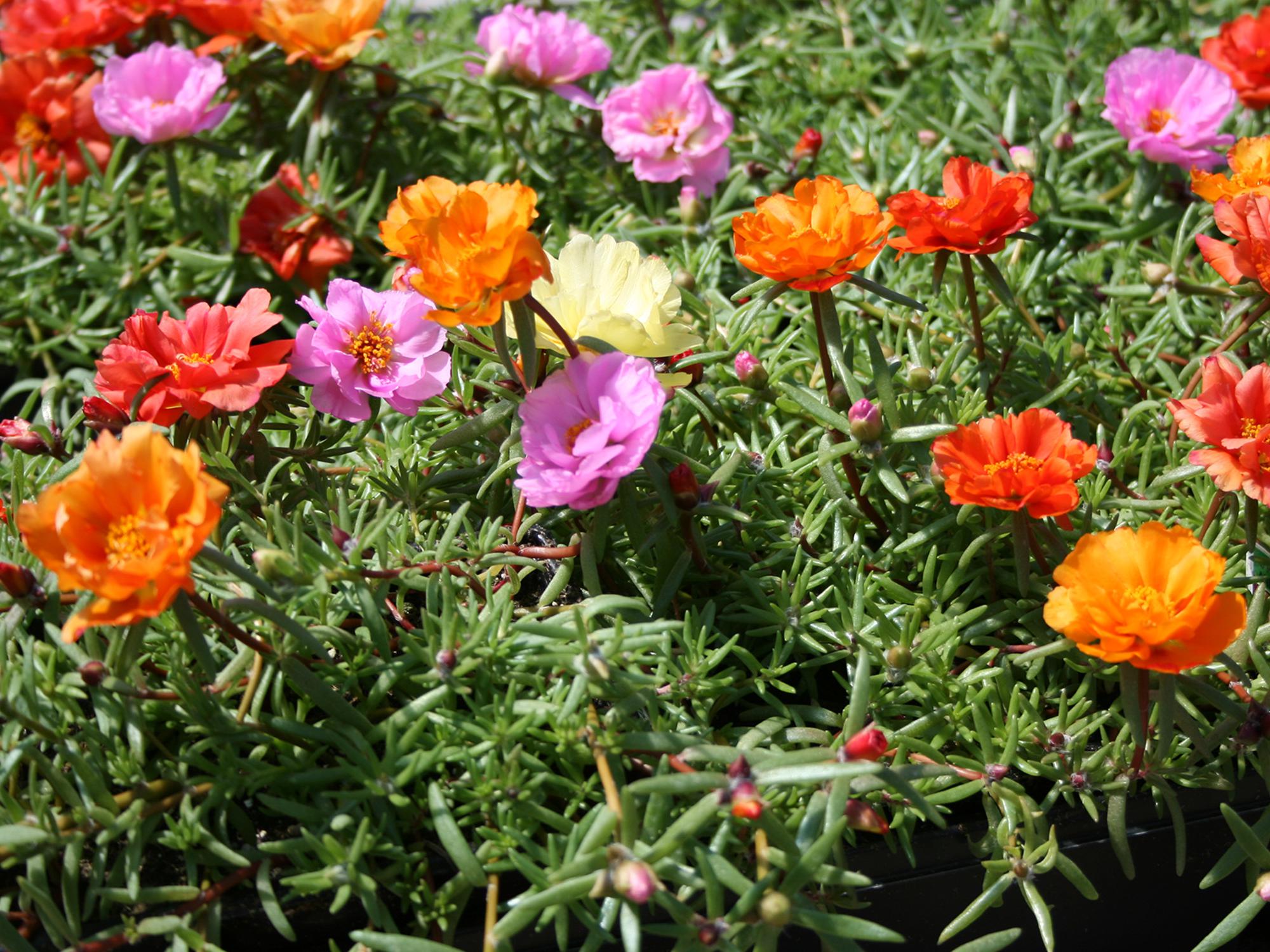Information Possibly Outdated
The information presented on this page was originally released on July 3, 2017. It may not be outdated, but please search our site for more current information. If you plan to quote or reference this information in a publication, please check with the Extension specialist or author before proceeding.
Try moss rose in summer containers and landscapes
I really like to the flowering annual purslane in our hot summer landscapes. It's a vigorous, low-growing plant that forms a colorful carpet with succulent foliage.
But I plan to write about that wonderful plant in the future. Today, I want to extoll the virtues of one of its cousins: moss rose.
Moss rose has fleshy, succulent foliage that helps it hold up to the summer heat. The 1-inch-long, cylindrical foliage is bright green and arranged in clusters on the stems.
I love the flowers, as most are semi-double or fully double, and they really do resemble tiny rose blooms. The flowers radiate colors of yellow, orange, bright pink and red. When massed planted as a mix, the color mashup is eye-catching. Mass planting this ground-hugging plant also creates a colorful ground cover.
Best flowering occurs when the plants receive about six hours of full sun a day. I find it interesting that at night and on cloudy days, the flowers seem to throw a little tantrum and actually close up.
The fact that they are tolerant of droughty conditions during high summer temperatures is a great attribute, but realize that they are not cacti. You will enjoy the best flowering display if you make sure the planting bed or container receives consistent irrigation. I’m growing a fine batch of moss rose in my self-watering container gardens, as the subirrigation is really paying off.
I love the fact that when moss rose is planted in a sunny location, it blooms nonstop pretty much all season. Around the beginning of August, I’ll trim the plants back and give them a shot of fertilizer to help them become a little fuller and ready to take on the fall gardening season.
One of my favorite series to grow in my landscape is Sundial, a group that has been a garden staple for many years.
The first time I realized how much I appreciate these plants was years ago visiting the annual Flower Day at Park Seed in Greenwood, South Carolina. Right there at the entrance to their trial gardens was a huge floral sundial, and I think you can guess which flowers were used: Sundial moss rose. I was hooked.
When purchasing yours, select plants that look healthy. Usually the biggest selection is available early in the spring, but I’ve recently seen some moss rose on the abused plant racks, and they still look pretty good. It’s a testament to their toughness.
Plant yours about 6 inches apart in a well-drained landscape bed. However, containers work best in my opinion.
Over the years, I’ve noticed that moss rose plants will reseed the following year. It won’t become a weedy mess you’re forced to clean up, but I am amused at where the seeds end up. Cracks in walkways and my volcanic rock mulch are likely locations. Like all volunteers that pop up in my garden and landscape, I let them grow to be enjoyed.




